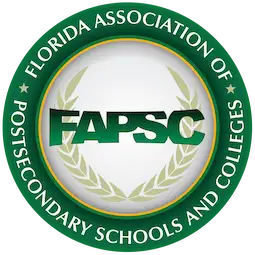How to Effectively Navigate Financial Aid and Scholarships
Financial aid is an important tool for American students, as the majority (86%) successfully apply for and receive assistance. However, navigating financial aid and scholarships can be a complex and overwhelming process for many. Understanding how to effectively navigate these resources is essential to minimize student loan debt and make higher education more accessible.
Demystifying Financial Aid: Understanding the Basics
Understanding and accessing financial aid is crucial for many students pursuing higher education. However, the process can often be overwhelming. Let’s break down the basics of financial aid and highlight the available resources that can help individuals navigate this complex landscape.
Types of Financial Aid
There are many types of financial aid, including grants, scholarships, loans, and work-study programs. Each of these has its own eligibility criteria, terms, and conditions. Ensure that you know what you’re eligible for and understand what each type entails.
The Importance of FAFSA
The Free Application for Federal Student Aid (FAFSA) is the key to unlocking financial aid opportunities. Because 47% of all scholarships and grants are from federal sources, this one application serves as the gateway to various federal financial aid programs, grants, work-study opportunities, and even state and institutional funding. Filling out the FAFSA is crucial because it helps determine your eligibility for various types of financial aid, including scholarships and student loans.
Available Resources
Various resources assist students in the financial aid process, and each college has its own offerings. Before enrolling, determine whether your college has financial aid offices, guidance counselors, online tools, or informative websites.
Educational institutions are perfectly positioned to leverage relationships and partnerships to help you plan your education journey and manage your finances. Be sure to use these resources to your advantage in your financial planning.
Scholarships 101: Tips for Finding and Applying for Scholarships
Scholarships play a significant role in reducing the burden of educational costs. However, finding the right scholarships and successfully applying for them can be a challenge. Here’s a comprehensive guide to help students search for scholarships and improve their chances of receiving them.
Identifying Scholarship Opportunities
Scholarships are an excellent way to reduce the financial burden of furthering your education. There are many different sources of scholarships, such as colleges and universities, private organizations, community foundations, and professional associations. Online tools can help you find opportunities.
Scholarship Application Process
Before you apply for a scholarship, you should learn how to write compelling essays, obtain strong letters of recommendation, and prepare an impressive resume. Submit your applications well before the deadline and stay organized throughout the application process.
Navigating Unique Scholarship Opportunities
Some scholarships target specific interests, skills, or demographics. Whether the funds are available for specific programs, first-generation college students, or individuals from underrepresented backgrounds, research each option carefully and prepare the specific documents you need to apply for these specialized scholarships.
Maximizing Your Financial Aid: Strategies to Get the Most Out of Your Funding Opportunities
Securing financial aid is only the beginning. Take advantage of these strategies to help maximize your access to financial aid and get the most out of your funding opportunities.
Leveraging Need-Based Aid
Need-based aid refers to financial aid resources that may be available to you depending on your family’s financial situation. To effectively leverage need-based aid, it’s essential to thoroughly understand the various types of aid available, such as grants, scholarships, and work-study opportunities.
Begin by carefully reviewing and completing the Free Application for Federal Student Aid (FAFSA) or any other required financial aid applications. This application will help determine your eligibility for need-based aid and provide a basis for negotiations with financial aid offices. Additionally, ask about any special programs or financial aid opportunities offered by the institution or external organizations, as these can often provide additional support.
By actively seeking out and applying for all relevant need-based aid opportunities, students can increase their chances of receiving the maximum amount of financial assistance available to them, and reduce the burden of debt upon graduation.
Exploring Alternative Funding Options
Scholarships may not cover all educational expenses. To bridge funding gaps, students can explore alternative options, such as work-study programs or part-time employment on- or off-campus.
In the end, successfully navigating financial aid and scholarships requires a combination of knowledge, resourcefulness, and determination. By utilizing the strategies and tips outlined in this blog post, students can embark on a path towards affordable education while minimizing the burden of student loans. With careful planning and informed decision-making, students can achieve their educational goals and lay the foundation for a successful future.
Learn more about how different financial aid programs and scholarships can help you begin your educational journey with HCI College.
If you found this article helpful, please share it on your social media channels.














